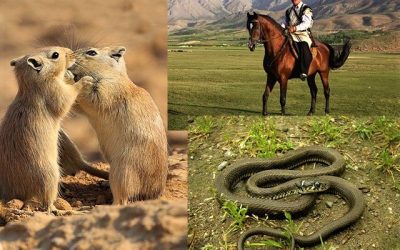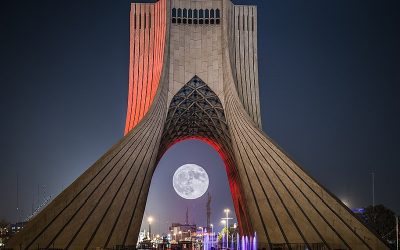Exploring Iranian Cuisine: A Culinary Treasure of Persia
Iranian cuisine is a rich tapestry of flavors, aromas, and traditions that reflects the country’s diverse geography, history, and culture. From aromatic stews to fragrant rice dishes, every meal tells a story of heritage and hospitality. As food tourism grows in Iran, travelers worldwide are drawn to the vibrant markets, traditional recipes, and warm-hearted hosts that define Iranian cuisine. In this comprehensive guide, we uncover the unique elements of Persian gastronomy and why it’s a must for culinary adventurers.
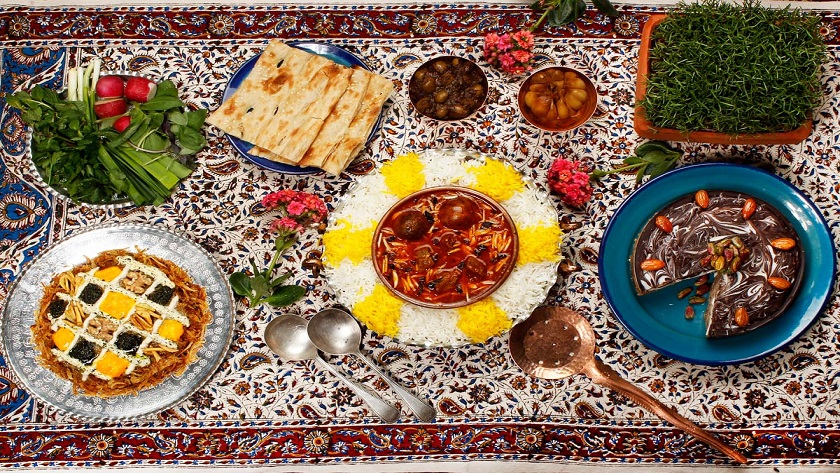
What Makes Iranian Cuisine Unique?
Iranian cuisine stands out due to its focus on fresh ingredients, balanced flavors, and a harmonious blend of spices. It combines influences from Central Asia, the Middle East, and even India, creating a distinct culinary identity that’s both timeless and innovative.
Key Ingredients in Iranian Cuisine
- Saffron: Known as “red gold,” saffron is used to enhance the aroma and color of rice, desserts, and stews.
- Herbs: Fresh herbs like parsley, mint, and cilantro are staples in Persian dishes, often used as a base or garnish.
- Pomegranate: This fruit’s juice and seeds add a sweet and tangy flavor to many recipes, especially stews.
- Dried Limes: A signature ingredient in stews like ghormeh sabzi, dried limes impart a unique citrusy depth.
- Nuts: Pistachios, walnuts, and almonds are frequently used in both savory and sweet dishes.
Regional Variations in Iranian Cuisine
Iran’s vast geography—from mountains to deserts and coastal areas—influences the ingredients and flavors found in each region.
Northern Iran
Known for its lush greenery and proximity to the Caspian Sea, the north offers dishes rich in herbs and seafood. Mirza Ghasemi (smoked eggplant dip) and baghali ghatogh (fava bean stew) are iconic here.
Southern Iran
The Persian Gulf’s influence brings spicy and tangy flavors, often paired with seafood. Dishes like ghalieh mahi (fish stew) and shrimp kebab are popular.
Central Iran
This region boasts hearty and aromatic dishes. Lamb-based stews and desserts like gaz (nougat) highlight the culinary traditions of cities like Isfahan and Yazd.
Western Iran
The mountainous west is known for its grilled meats and ash (soups). Dande kebab (rib kebabs) is a local specialty.
Iconic Dishes of Iranian Cuisine
1. Chelo Kebab
Iran’s national dish, chelo kebab, features tender skewers of meat served with saffron-infused rice. A dollop of butter and grilled tomatoes complete this hearty meal.
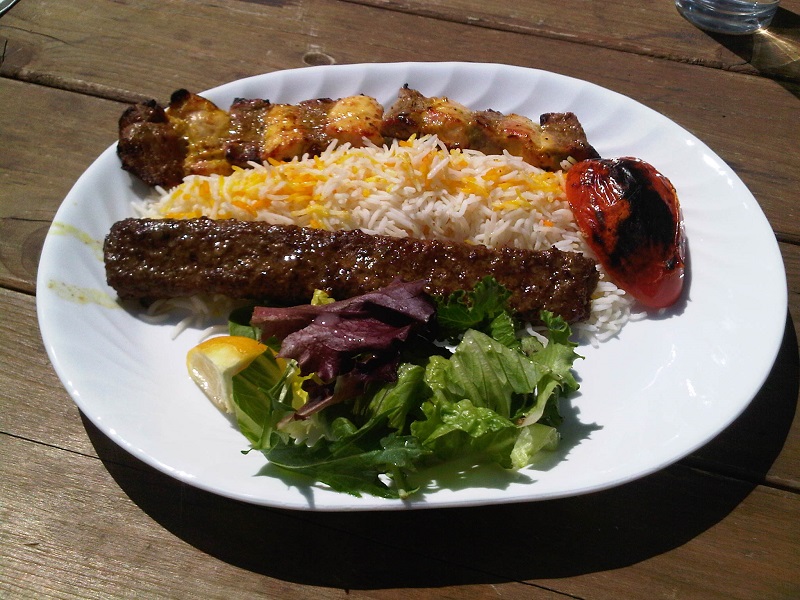
2. Ghormeh Sabzi
A fragrant herb stew made with dried limes, kidney beans, and lamb, ghormeh sabzi is a cornerstone of Iranian home cooking.
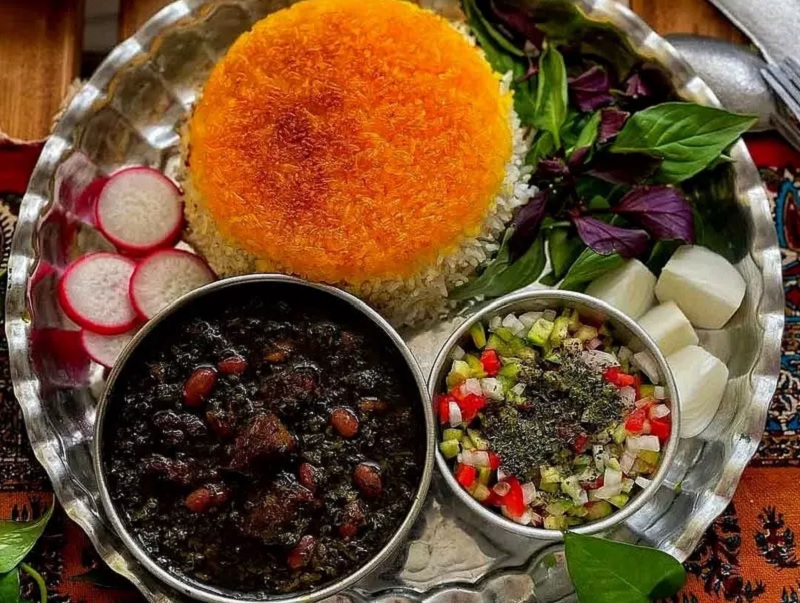
3. Fesenjan
This luxurious stew combines ground walnuts and pomegranate molasses, resulting in a rich, sweet-sour flavor. It’s often served at weddings and celebrations.
4. Tahdig
The crispy, golden layer of rice at the bottom of the pot, known as tahdig, is a beloved delicacy. Variations include adding potatoes, bread, or yogurt for extra flavor.
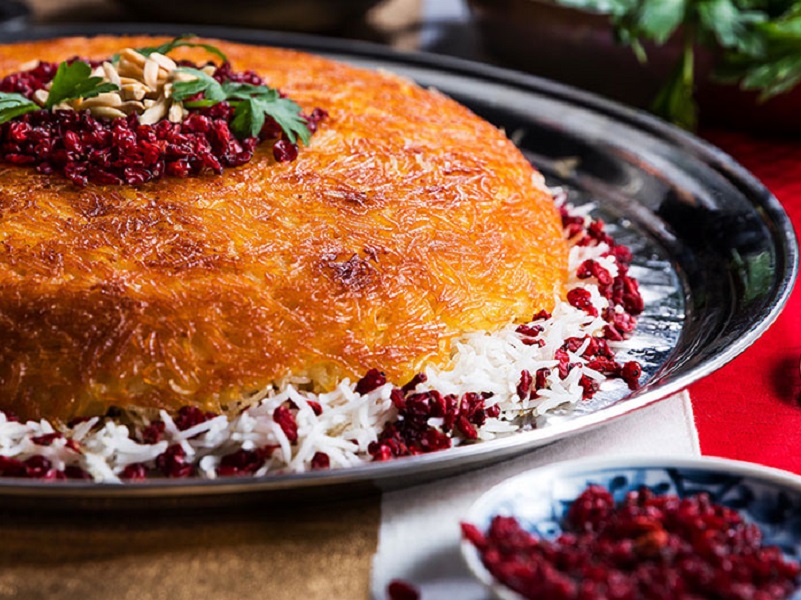
5. Ash Reshteh
This hearty noodle soup, brimming with herbs, legumes, and whey, is a comforting dish often enjoyed during winter or special occasions.
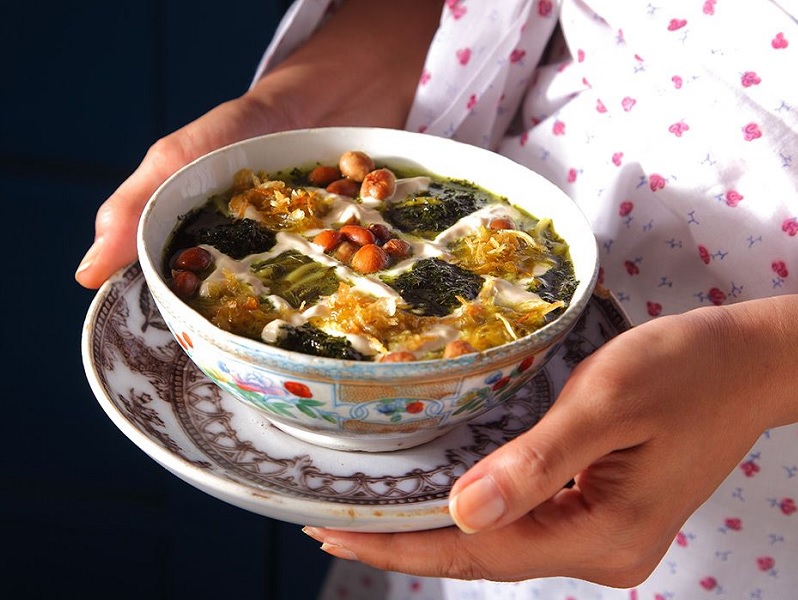
Traditional Sweets and Beverages
Iranian cuisine extends its artistry to desserts and drinks, which are as flavorful as its savory dishes.
Popular Desserts
- Baklava: Layers of pastry filled with nuts and flavored with rosewater.
- Zoolbia and Bamieh: Syrupy fritters often served during Ramadan.
- Sohan: A saffron-infused brittle made with wheat sprout and pistachios.
Traditional Beverages
- Persian Tea: A cultural staple served with sugar cubes or dates.
- Sharbat: Refreshing drinks made from fruits and herbs, perfect for hot summer days.

Food Tourism in Iran
1. Exploring Bustling Bazaars
Iranian bazaars, like the Grand Bazaar of Tehran and Vakil Bazaar in Shiraz, are sensory paradises. Visitors can explore stalls filled with spices, dried fruits, nuts, and saffron while enjoying the vibrant atmosphere.
2. Learning Through Cooking Classes
Food tourists can participate in Iranian cooking classes to learn the techniques behind iconic dishes. These hands-on experiences often include visits to local markets for fresh ingredients.
3. Savoring Regional Food Tours
Guided culinary tours offer an opportunity to sample regional specialties, from the seafood of Bandar Abbas to the pastries of Yazd.
4. Experiencing Persian Hospitality
Iranians are known for their hospitality, and food plays a central role. Sharing a meal with locals provides insight into Persian culture and traditions.
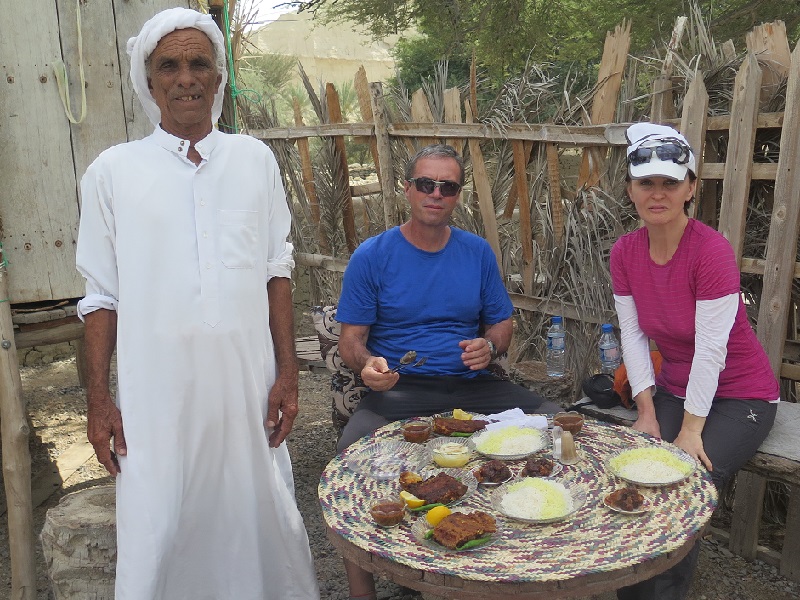
The Role of Iranian Cuisine in Culture
Food is more than sustenance in Iran; it’s a medium for connection, celebration, and storytelling. Dishes are often tied to cultural events like Nowruz (Persian New Year), where symbolic foods like sabzi polo ba mahi (herbed rice with fish) are served. Weddings, funerals, and other gatherings also have specific culinary traditions that honor the occasion.
Tips for Exploring Iranian Cuisine
- Plan Around Festivals: Visiting during Nowruz or Ramadan allows you to experience festive dishes.
- Try Local Specialties: Each city has its signature dishes—don’t miss out on these unique flavors.
- Visit Local Farms: Join tours to saffron fields or pistachio farms to see the origins of essential ingredients.
- Learn Food Etiquette: Iranians typically share food family-style; don’t hesitate to partake in this communal experience.
Conclusion
Iranian cuisine is a journey through history, geography, and culture. From the bustling bazaars to the family dining table, every bite offers a glimpse into Persia’s soul. With its diverse regional specialties, iconic dishes, and heartfelt hospitality, Iran is a dream destination for food enthusiasts. Whether you’re savoring saffron-laced rice or learning to cook traditional stews, Iranian cuisine promises a culinary adventure unlike any other.







